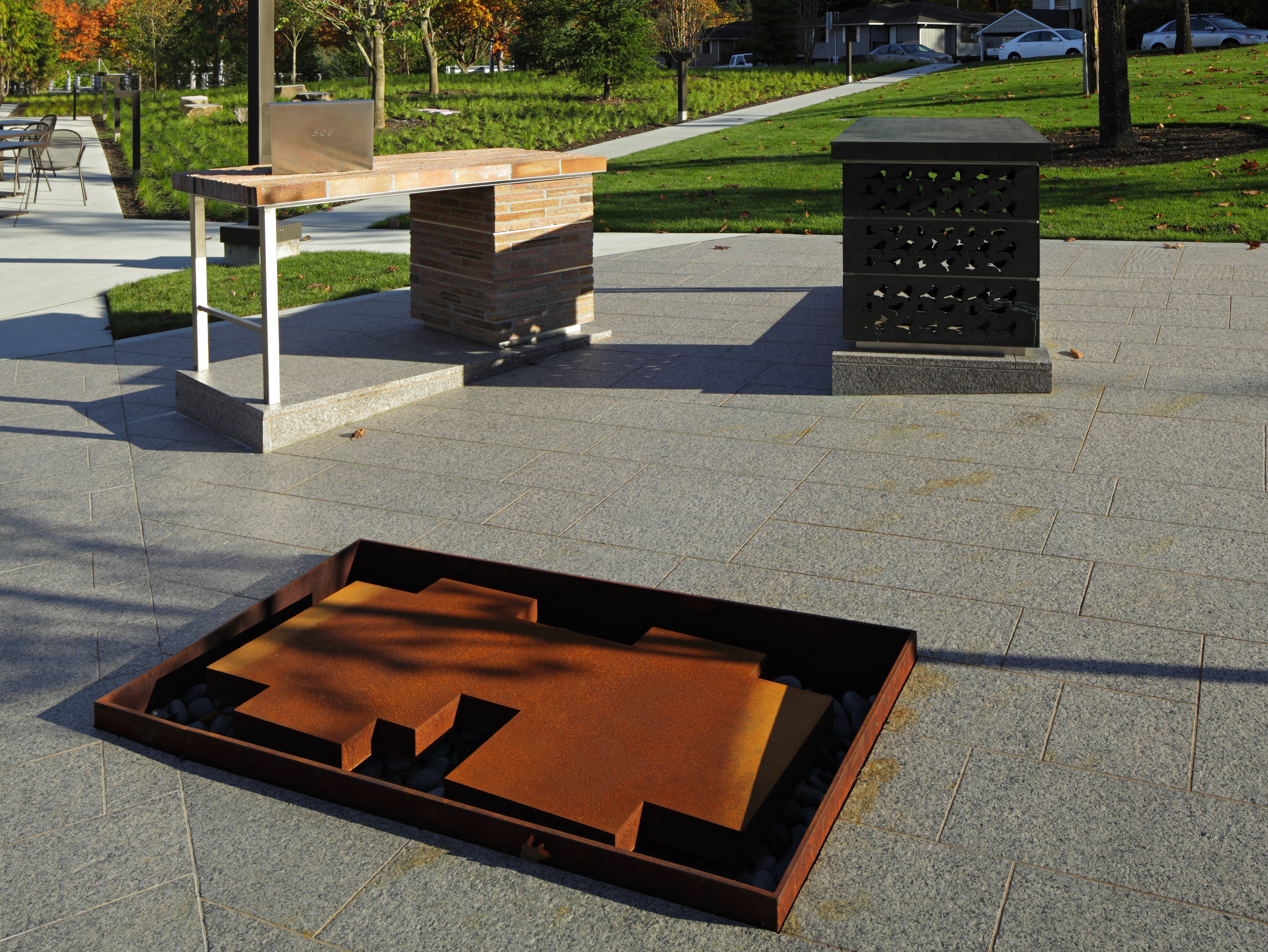Home:Office - Blue McRight

Home:Office, created by Blue McRight, brings the legendary JLARC building forward as a physical presence at the Wheeler site while honoring its history and many connections to the local community.
The JLARC building was designed by local architect George L. Ekvall and completed in 1949. Known as the Clow Apartments, the building was residential until the 1980’s, when it became offices for the State of Washington and by 1994, specifically for the Joint Legislative Audit and Review Committee (JLARC). It was demolished in 2009 in the redevelopment of the Wheeler site for the State’s Department of Information Services.
Even as office space, the building retained its residential flavor by virtue of its design and sense of community. Home:Office is expressive of the layers of meaning inherent to the conflation of domestic and business space that occurred over sixty years.
At the southeast corner of the Wheeler site is the Artwork Plaza, a primary element of Home:Office and the location of its group of three sculptures. The Artwork Plaza creates a focal point along two major pathways linking the campus and the adjoining neighborhood. Granite pavers in a running bond pattern reference the horizontal siding of nearby houses. Interspersed within the pattern are 16 square pavers that symbolize the makeup of the JLARC: eight Democrats and eight Republicans. The gently sloping Artwork Plaza is a metaphor for the flow of time.
The world of home and the world of office have several pieces of furniture in common: a desk represents one such overlap. Informed by this idea, the Brick Desk and the Bronze Desk were created as two of the Artwork Plaza sculptures. They are emblematic, larger than life; their scale and form familiar, yet unfamiliar.
Part of the actual JLARC building has been incorporated into the artwork: the Brick Desk is made from bricks salvaged prior to demolition. Bearing the patina of age, the bricks have an organic appearance that extends the sculpture’s historical reference. On the desktop is a stainless steel Laptop incorporating didactic materials that provide a concise history of the JLARC building. The Laptop’s “screen” features a porcelain enamel black and white photo of the building taken in 1949, shortly after completion; its “keyboard” is an etched text panel. The numerical address, 506, appears as a “logo” in the same font as the original address numbers on the building.
The Bronze Desk is made of welded bronze sheets. A repeating pattern of bird silhouettes, its regularity a reference to DIS data systems, is etched onto the desktop and hydro-jet cut into the cabinet. These birds, the Steller’s Jay and the Horned Lark, are found in Washington state year-round. Together they symbolize the JLARC acronym. Illuminated from within the cabinet, the birds glow at night.
The third sculpture at the Artwork Plaza is the JLARC Footprint, made of Cor-ten steel. Its shape describes the first floor plan of the building. The natural rust finish of the steel references a local landmark: the orange-painted residence directly across the street from the former location of the building.
Home:Office creates a place on the new 1500 Jefferson campus for a meaningful neighborhood landmark, the JLARC building, to be remembered.
McRight’s many public art commissions completed since 1993 include major sculptural works at the State Capital Complex in Sacramento and Staples Center, Los Angeles. Her work is represented in various museum, public, and private collections around the country.